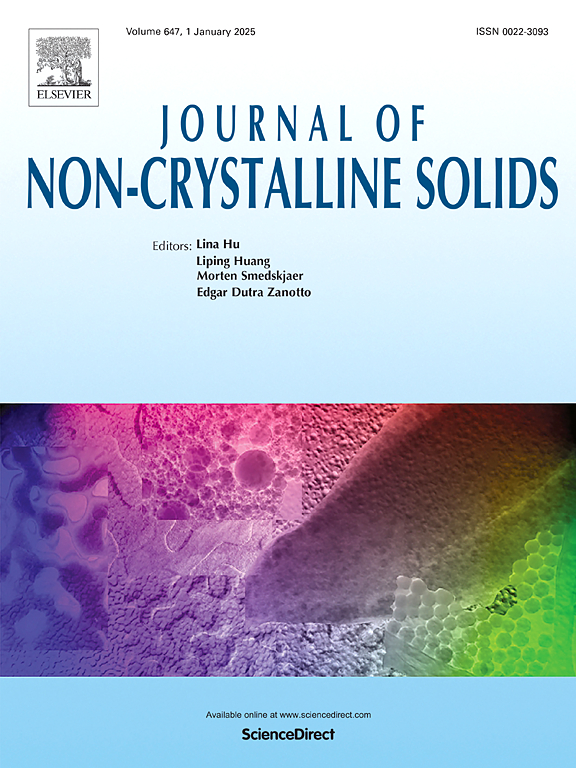熔体粘度测定的DSC移位因子法的实验室内校准:以偏硅酸铅玻璃为例
IF 3.5
3区 材料科学
Q1 MATERIALS SCIENCE, CERAMICS
引用次数: 0
摘要
差示扫描量热法(DSC)位移因子方法为确定玻璃成型熔体的剪切粘度提供了一个强大的工具。然而,它的准确性取决于位移因子(K)的正确确定-通过将DSC数据与粘度相连接来建立K的过程,这里称为“实验室内校准”-然后将有效温度与粘度联系起来。在这项研究中,我们通过整合从同一批次获得的样品的常规DSC,闪光DSC和球穿透粘度测量来确定偏硅酸铅(PbSiO3)玻璃的K。采用拉曼光谱法验证测量前后样品的完整性。我们的结果证实了DSC偏移因子方法的适用性,得到偏移因子Konset = 10.92±0.04,Kpeak = 9.41±0.08,Kendset = 8.71±0.07。这些发现强调了实验室内校准在改进基于dsc的精确测定玻璃形成系统粘度的方法中的重要性。本文章由计算机程序翻译,如有差异,请以英文原文为准。
Intralaboratory calibration of the DSC shift-factor approach for melt viscosity determination: A case study on lead metasilicate glass
The differential scanning calorimetry (DSC) shift-factor approach provides a powerful tool for determining the shear viscosity of glass-forming melts across several orders of magnitude. Its accuracy, however, depends on the proper determination of the shift factor (K) – a process of establishing K by linking DSC data to viscometry, herein termed 'intralaboratory calibration' – which then connects the fictive temperature to viscosity. In this study, we determine K for lead metasilicate (PbSiO3) glass by integrating conventional DSC, flash DSC, and ball penetration viscometry measurements on samples obtained from the same batch. Raman spectroscopy was employed to verify sample integrity before and after measurements.
Our results confirm the applicability of the DSC shift-factor approach, yielding shift factors of Konset = 10.92 ± 0.04, Kpeak = 9.41 ± 0.08, and Kendset = 8.71 ± 0.07. These findings underscore the importance of intralaboratory calibration in refining the DSC-based method for accurate viscosity determination in glass-forming systems.
求助全文
通过发布文献求助,成功后即可免费获取论文全文。
去求助
来源期刊

Journal of Non-crystalline Solids
工程技术-材料科学:硅酸盐
CiteScore
6.50
自引率
11.40%
发文量
576
审稿时长
35 days
期刊介绍:
The Journal of Non-Crystalline Solids publishes review articles, research papers, and Letters to the Editor on amorphous and glassy materials, including inorganic, organic, polymeric, hybrid and metallic systems. Papers on partially glassy materials, such as glass-ceramics and glass-matrix composites, and papers involving the liquid state are also included in so far as the properties of the liquid are relevant for the formation of the solid.
In all cases the papers must demonstrate both novelty and importance to the field, by way of significant advances in understanding or application of non-crystalline solids; in the case of Letters, a compelling case must also be made for expedited handling.
 求助内容:
求助内容: 应助结果提醒方式:
应助结果提醒方式:


